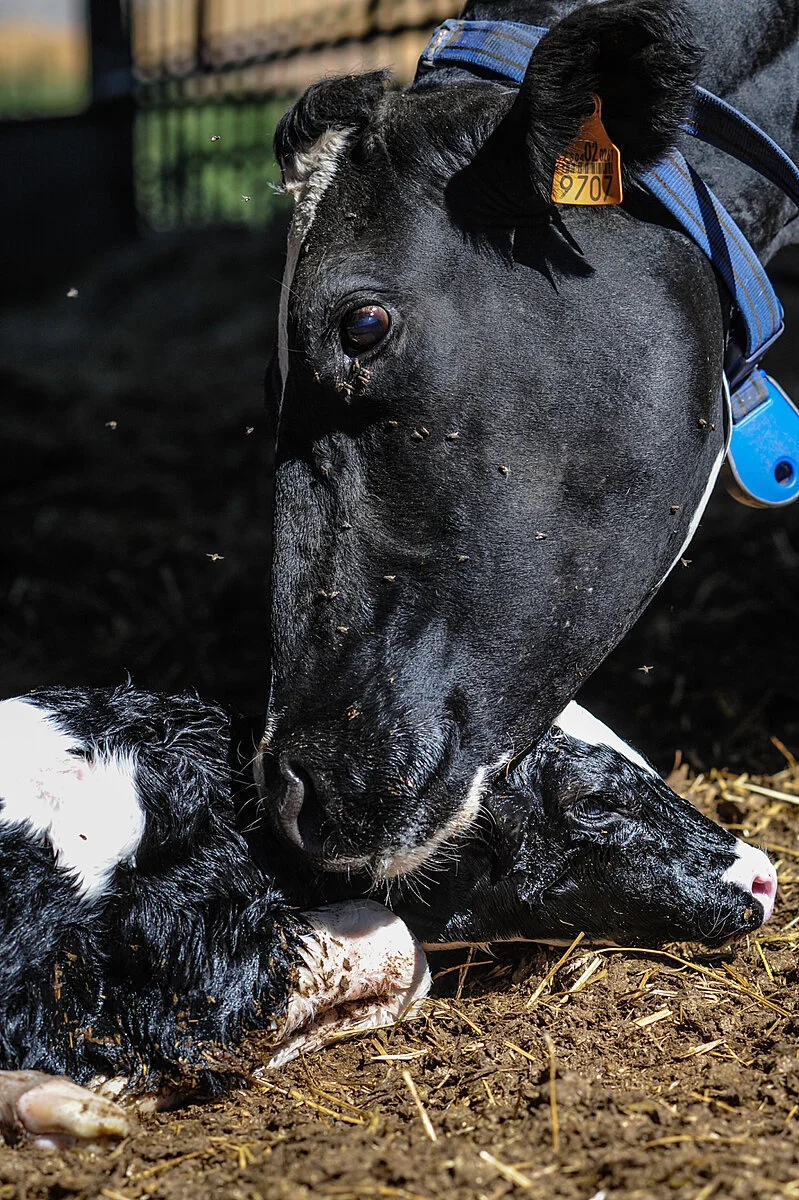By Jessica Scott-Reid
Jessica is a Canadian writer, animal advocate and plant-based food expert. Her work appears regularly in media across Canada and the US.
By 2026, the global plant milk market value is expected to exceed $21 billion USD. The non-dairy ice cream market alone, already exceeded $500 million USD globally in 2019, and is expected to continue growing. And gourmet cheeses made from nuts are now being discussed by the likes of Bon Appetit magazine and The New York Times. So what has inspired this recent increased interest in plant-based dairy alternatives? It is very much tied to mounting media and academic conversations around climate change, food ethics, and cows.
While most conversations around cows and the climate crisis tend to focus on the beef industry and its grave impacts on the environment, less often is it noted how beef and dairy production are actually, intrinsically linked. Male calves born into the dairy industry feed the veal industry, and dairy cows no longer able to produce milk at a profitable rate are slaughtered for low-grade beef. The beef and dairy industry go hand-in-hand. So when we talk about the impact that cows have on the planet, dairy should not get a pass.
In fact, according to the BBC, the dairy industry’s emissions were “equivalent to more than 1,700 million tonnes of CO2” in 2015, which made up “3.4% of the world's total of almost 50,000 million tonnes that year. That makes dairy's contribution close to that from aviation and shipping combined.”
But it is not only the atmosphere and air quality being negatively impacted by dairy production. In the US alone, dairy cows use up approximately 1,410,000,000 liters of water every single day to make milk, and then create nearly 400,000 tons of waste. This all wreaks havoc on waterways, ecosystems and wildlife.
There are also notable animal welfare concerns associated with cow milk production. While some may believe that cows just naturally produce milk, and that humans are somehow relieving them by taking it, undercover activists and whistleblowers have in recent years been helping consumers learn about the long-hidden realities of dairy production. The truth is that cows can only make milk after giving birth, and thus farmers must keep dairy cows continually pregnant and giving birth. Then, soon after birth their calves are taken away in order for that milk to be re-routed for human consumption. This cycle is forced upon dairy cows over and over again until they are no longer able to produce. Then they are slaughtered.
Dairy cow with newborn calf. Photo: Jo-Anne McArthur/Animal Equality/We Animals Media
Thankfully, dairy alternatives are now abundant and widespread. Milk made from oats, soy, hemp or peas, fortified with vitamin D (as dairy milk is), B12 and calcium offer similar nutritional benefits as mammalian cow milk. And, according to one Oxford study, producing a glass of any plant-based milk results in over three times fewer greenhouse gas emissions than a glass of dairy milk.
Cheeses and cream sauces made with sustainable nuts, seeds or coconut are just as decadent and rich as their dairy counterparts. And ice creams made from soy or coconut milk offer all the fun and flavour without the animal fat and massive eco-footprint.
Dairy-alternative dishes are also easy to make at home. The School Night Vegan offers an amazing recipe for gooey, melty mozzarella cheese made with cashews, nutritional yeast (a cheesy vegan super food that adds umami) and the secret ingredient: psyllium husks. Registered dietician Dr. Pamela Fergusson, has an easy recipe for plant-based mac and cheese using sweet potatoes and sunflower seeds. And popular food blogger Erin Ireland created a way to turn tofu into feta cheese in the most magical way. Recipes and methods for turning plant foods into dairy alternatives are truly endless.
One of my favorite creamy dishes is also made with sunflower seeds (a nutrient-packed, sustainable food) that can be used as a base for alfredo sauce, cheese sauce, stroganoff, or creamy lemon pasta.
Creamy lemon pasta
Combine in a blender (I like the Nutribullet)
1 ½ cup raw sunflower seeds, pre-soaked
1 ½ tablespoons nutritional yeast
2 cloves garlic
Juice of half a lemon
¼ teaspoon lemon extract
¾ teaspoon salt
½ teaspoon lemon pepper or black pepper
1 ½ cup water
Blend until very smooth. Heat in a sauce pan on medium, stirring constantly until you see a few bubbles, adding water to thin if necessary. Turn to low and toss in cooked pasta. Serve garnished with lots of parsley, and optional zucchini, asparagus, broccoli or spinach.
Cutting our eco-impact by making wiser consumer choices does not have to mean giving up the foods we love. Dairy alternatives, both store-bought and homemade can offer a sustainable and ethical way to continue enjoying creamy, decadent and satisfying dishes, while causing less harm to the planet, the animals and ourselves.


